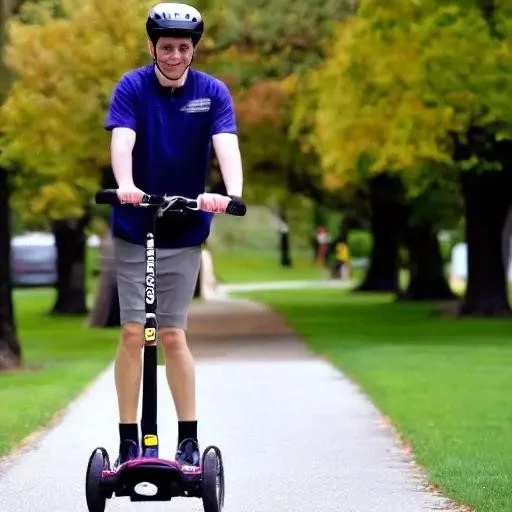In an era defined by accelerating innovation and an unyielding pursuit of independence, mobility scooters have transcended their utilitarian origins, emerging as remarkably effective instruments of personal liberation. These ingenious devices are not merely aids; they are gateways to renewed engagement with communities, offering a powerful sense of autonomy to countless individuals worldwide. Often, the conversation around these vital tools quickly gravitates to a crucial question: how fast do mobility scooters go? It’s a query that delves far deeper than simple velocity, touching upon engineering marvels, stringent safety regulations, and the profound impact on daily living that thoughtfully designed mobility can provide.
Gone are the days when mobility solutions were synonymous with limitations. Today’s market is brimming with diverse models, each meticulously engineered to cater to specific needs and environments, promising not just movement but enhanced life quality. From navigating bustling city sidewalks to traversing the serene pathways of a park, understanding the nuanced capabilities of these increasingly sophisticated vehicles is paramount. By integrating insights from cutting-edge design and user-centric philosophy, manufacturers are continually redefining what’s possible, ensuring that speed is just one facet of a much larger, more empowering narrative.
Mobility Scooter Speed & Classification Overview
Understanding the regulatory frameworks and typical performance ranges for mobility scooters.
| Category/Class | Typical Max Speed (MPH/KM/H) | Usage Environment | Key Features/Regulations |
|---|---|---|---|
| Class 2 Mobility Scooters | Up to 4 mph (approx. 6 km/h) | Pavements, Footpaths, Indoor Use | Designed for pedestrian areas; no road use (except when crossing); typically smaller, highly maneuverable. |
| Class 3 Mobility Scooters | Up to 8 mph (approx. 12 km/h) | Roads (where permitted), Pavements (at 4 mph max) | Road-legal (requires lights, indicators, horn, rear-view mirror); larger, more robust; often equipped for longer distances. |
| Portable/Travel Scooters | Typically 3-4 mph (approx. 5-6 km/h) | Indoor, Shopping Centers, Light Outdoor Use | Designed for easy disassembly/folding; lighter weight; focus on portability over speed/range. |
| Heavy Duty/All-Terrain | Up to 8 mph (approx. 12 km/h) | Varied terrain, Outdoor, Rougher surfaces | Enhanced suspension, larger tires, powerful motors; built for durability and stability on challenging ground. |
For official UK government guidance on powered wheelchairs and scooters, including classification and use, please refer to: GOV.UK: Mobility scooters and powered wheelchairs rules
The Speed Spectrum: Pavement Cruisers to Road Warriors
When we delve into the specifics, the speed of a mobility scooter isn’t a singular metric but rather a spectrum dictated by design, purpose, and, most crucially, regulatory frameworks. In many regions, including the UK and parts of Europe, these devices are primarily categorized into two distinct classes. Class 2 mobility scooters, affectionately known as pavement scooters, are ingeniously restricted to a maximum speed of 4 miles per hour (approximately 6 kilometers per hour). This meticulously calibrated speed ensures safe coexistence with pedestrians on sidewalks, in shops, and within other bustling public spaces, fostering a harmonious environment for all. These models prioritize maneuverability and compactness, making them incredibly effective for navigating tighter indoor spaces and crowded pedestrian zones without compromising safety.
Conversely, for those aspiring to cover greater distances or traverse public roads, the robust Class 3 mobility scooters present a compelling solution. These powerful machines are permitted to reach speeds of up to 8 miles per hour (approximately 12 kilometers per hour) when used on the road. However, a crucially important caveat dictates that their speed must be reduced to the Class 2 limit of 4 mph when operating on pavements, ensuring pedestrian safety remains paramount. Equipped with features akin to conventional road vehicles—such as lights, indicators, and mirrors—these scooters offer enhanced stability and range, seamlessly bridging the gap between personal mobility and broader transportation needs. Expert opinions consistently highlight that this dual-speed capability is a cornerstone of their versatility, empowering users to choose the appropriate velocity for their immediate environment.
Beyond the Numbers: Factors Influencing Performance
While maximum speed is undeniably a significant consideration, it’s merely one component of a truly effective mobility solution. The actual performance experienced by a user is a complex interplay of several factors. Battery life, for instance, dictates how far one can travel, with advanced lithium-ion technologies dramatically extending range and reducing charging times. Motor power influences acceleration and the ability to tackle inclines, ensuring a smooth, responsive ride even on challenging gradients. Furthermore, suspension systems, tire types, and overall chassis design significantly impact comfort and stability, particularly when traversing varied terrains or encountering unexpected bumps. Industry examples abound, showcasing scooters specifically designed for all-terrain adventures, featuring enhanced ground clearance and robust tires, offering a dynamic contrast to the sleek, urban-focused models.
The selection process for a mobility scooter, therefore, becomes less about chasing the highest speed and more about finding a perfectly balanced symphony of features that align with individual lifestyles and requirements. By integrating AI-driven insights into design, manufacturers are now creating “smart” scooters that can adapt performance based on terrain, battery levels, and even user preferences, revolutionizing the user experience. This forward-looking approach ensures that every journey is not just fast enough, but also incredibly comfortable, effortlessly safe, and genuinely enjoyable, transforming mundane tasks into opportunities for exploration and connection.
Safety, Regulation, and the Future of Mobility
The regulations governing mobility scooter speeds are not arbitrary; they are meticulously crafted, having been developed over years, with user safety and public well-being at their core. Adhering to these speed limits is not just a legal obligation but a moral imperative, fostering respect for fellow pedestrians and road users. Manufacturers, in turn, are continually innovating within these established parameters, focusing on enhancing safety features such as automatic braking systems, advanced lighting, and intuitive controls, making scooters more user-friendly and secure than ever before. This unwavering commitment to safety, coupled with ongoing technological advancements, paints an incredibly optimistic picture for the future of personal mobility.
Looking ahead, the landscape of mobility scooters is poised for even greater evolution. We can anticipate further integration of connectivity features, perhaps even autonomous navigation aids in controlled environments, and increasingly lightweight yet durable materials. The drive to make these devices more accessible, more efficient, and more enjoyable is relentless. The core question of “how fast do mobility scooters go” will always be relevant, but its answer will continue to be framed within a broader narrative of enhanced independence, unparalleled safety, and a future where mobility is truly a right, not a privilege, for everyone. This empowering vision is steadily transforming lives, one confidently cruising journey at a time.

